15 imágenes microscópicas del cuerpo humano.
Página 1 de 1.
 15 imágenes microscópicas del cuerpo humano.
15 imágenes microscópicas del cuerpo humano.
15 imágenes en tres dimensiones capturadas con un microscopio de barrido (SEM), es un tipo de microscopio electrónico que utiliza un haz de electrones de alta energia para analizar las superficies de las imágenes, en este caso son partes de nuestro organismo.
1. Red blood cells
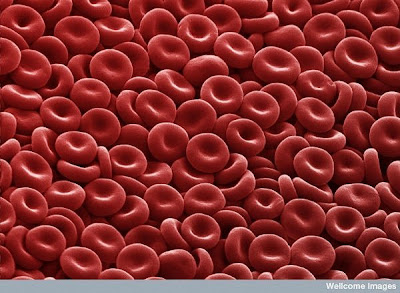
2. Split end of human hair
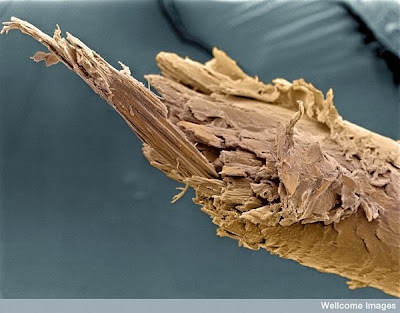
Regular accompaniments to your hair and good conditioner should help to stop this ugly image of a split end of a human hair.
3. Purkinje neurons
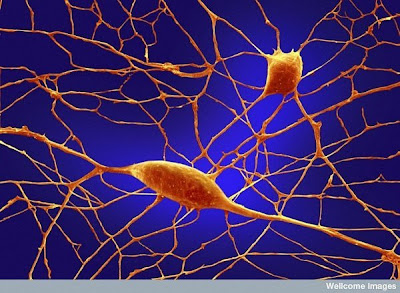
Purkinje neurons are some of the largest 100 billion neurons in your brain. And the other things this cells are master of motor coordination in the cerebellar cortex. Toxic exposure such as alcohol and lithium, autoimmune diseases, genetic mutations including autism and neuro degenerative diseases can negatively affect human Purkinje cells.
4. Hair cell in the ear
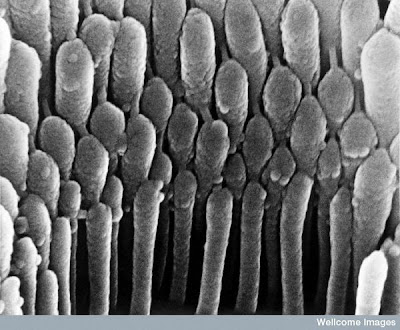
These are human hair cell stereocilia inside the ear. These notice mechanical movement in response to sound vibrations.
5. Blood vessels emerging from the optic nerve
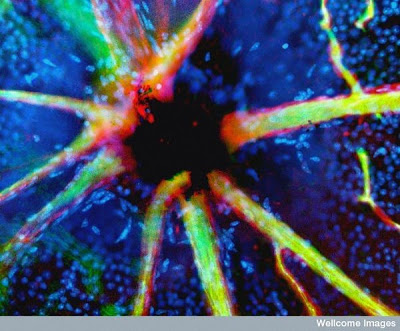
In this photo, stained retinal blood vessels are shown to emerge from the black-optical disc. The optical disc is a blind spot because no light receptor cells that exist in this area of the retina where the optic nerve and retinal blood vessels leaving the back of the eye.
6. Tongue with taste bud
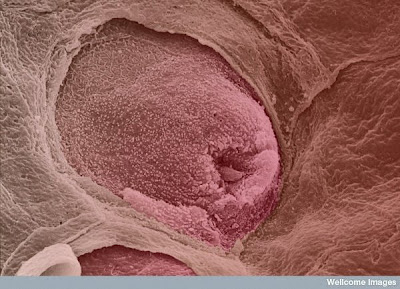
This enhanced color image shows a taste bud on your tongue. The human tongue has about 10,000 taste buds that are involved in detecting salt, acid, bitter, sweet and savory taste perceptions.
7. Tooth plaque
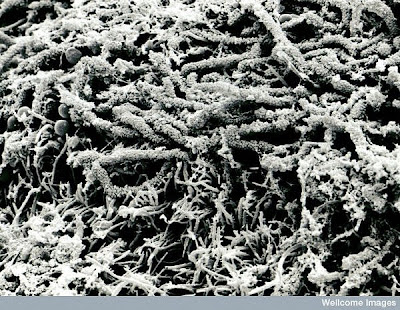
Brush your teeth often, because it is the surface of a tooth with a kind of “corn-on-the-Cob” plaque appearance.
8. Blood clot
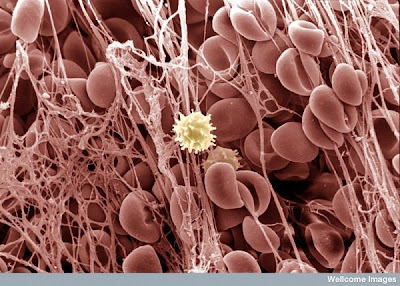
Remember that image of the good, uniform shape of red blood cells, you only looked at? Well, here is how it looks when the cells are trapped in the sticky web of a blood Clot. The cell in the middle is a white blood cell.
9. Alveoli in the lung
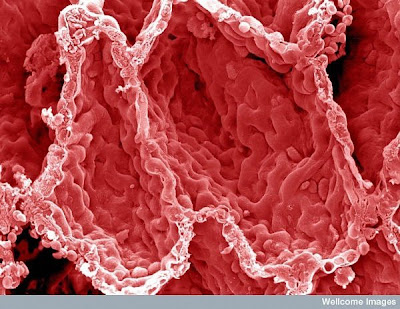
This is an enhanced color images of the inner surface of your lung looks like. The hollow cavities are alveoli; this is where gas exchange happens with the blood.
10. Lung cancer cells
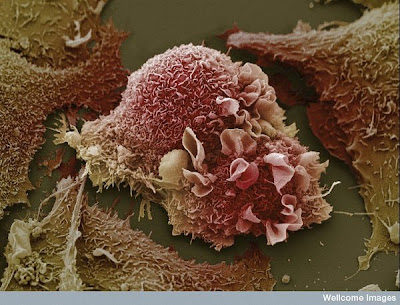
This image of warped lung cancer cells is in stark contrast to the healthy lung in the before picture.
11. Villi of small intestine
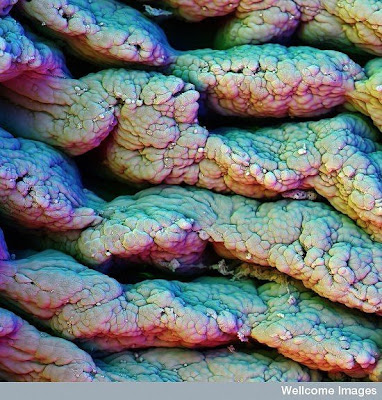
Villi in the small intestine raise the surface area of the gut, which helps in the absorption of food
12. Human egg with coronal cells
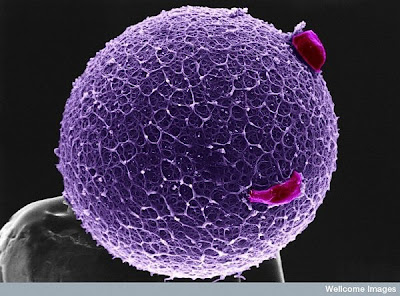
This purple colors image improves human egg sitting on a pin. The egg is coated with the zona pellicuda, a glycoprotein that protects the egg but also helps to trap and bind sperm. Two coronal cells are attached to the zona pellicuda.
13. Sperm on the surface of a human egg
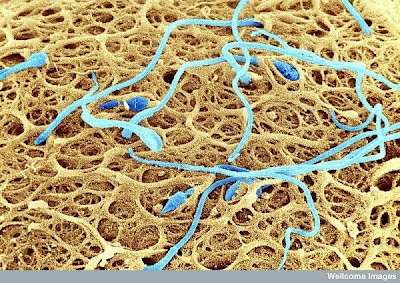
Here’s a close-up of a number of sperm trying to fertilise an egg.
14. Human embryo and sperm
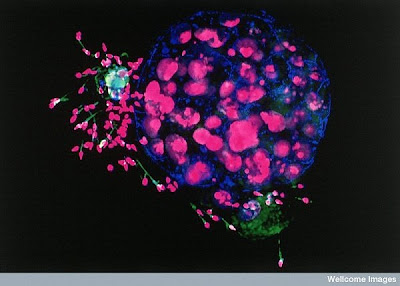
This images looks like the world at war but it’s really five days after the fertilization of an egg, with some remaining sperm cells still sticking around. This images captured by confocal microscope. The embryo and sperm cell nuclei are stained purple while sperm tails are green. The blue areas are gap junctions, which form connections between the cells.
15. Coloured image of a 6 day old human embryo implanting
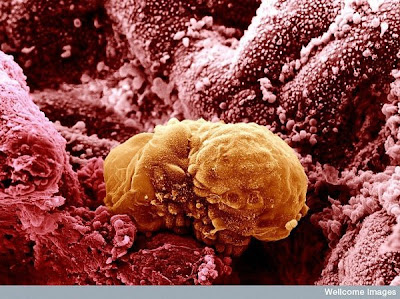
And the cycle of life starts again: this 6 day old human embryo is starting to implant into the endometrium, the lining of the uterus.
http://www.hotklix.com/link/news/India/see-the-15-amazing-3D-body-shots

Azali- Admin
- Cantidad de envíos : 50980
Fecha de inscripción : 27/10/2008
 Temas similares
Temas similares» Las veinte partes del cuerpo humano que resultan completamente inútiles
» Por qué la mitad de tu cuerpo no es humano (y cómo eso es fundamental para tu salud)
» Yo soy la verdad y la vida----El que cree en mí, aunque esté muerto, vivirá
» ¿Qué es y dónde está el mesenterio, el "nuevo órgano" del cuerpo humano identificado por los científicos?
» Humano contra humano. ¿Lo ayuda a bajarse o le parte la cabeza ahora que está agotado?
» Por qué la mitad de tu cuerpo no es humano (y cómo eso es fundamental para tu salud)
» Yo soy la verdad y la vida----El que cree en mí, aunque esté muerto, vivirá
» ¿Qué es y dónde está el mesenterio, el "nuevo órgano" del cuerpo humano identificado por los científicos?
» Humano contra humano. ¿Lo ayuda a bajarse o le parte la cabeza ahora que está agotado?
Página 1 de 1.
Permisos de este foro:
No puedes responder a temas en este foro.

